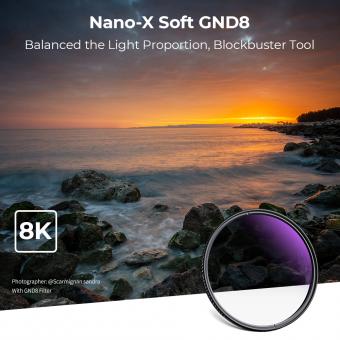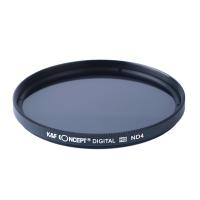How To Clean Film Negatives ?
To clean film negatives, start by handling them with clean, dry hands or wear lint-free gloves to avoid leaving fingerprints or smudges. Use compressed air or a soft brush to remove any loose dust or debris from the surface of the negatives. Avoid using canned air as it may contain harmful chemicals.
Next, prepare a cleaning solution by mixing a few drops of mild dish soap or film cleaner with distilled water. Moisten a lint-free microfiber cloth or a soft, non-abrasive sponge with the cleaning solution. Gently wipe the negatives in a straight motion, avoiding circular or rubbing motions that could cause scratches.
After cleaning, rinse the negatives with distilled water to remove any residue from the cleaning solution. Pat them dry with a clean, lint-free cloth or allow them to air dry in a dust-free environment. Avoid using paper towels or tissues as they can leave lint or scratches.
It's important to note that if the negatives are severely damaged or have mold growth, it is best to consult a professional conservator or photo lab for proper cleaning and restoration.
1、 Handling and Storage of Film Negatives
Handling and storage of film negatives is crucial to ensure their longevity and quality. Cleaning film negatives should be done with utmost care to avoid any damage. Here is a step-by-step guide on how to clean film negatives:
1. Prepare a clean and dust-free workspace: Choose a well-lit area with minimal dust to work on your film negatives. Make sure to wash and dry your hands thoroughly before handling them.
2. Use compressed air or a soft brush: Start by gently blowing away any loose dust or debris using compressed air or a soft brush. This will help remove larger particles without touching the film surface.
3. Use a film cleaning solution: If there are stubborn stains or fingerprints on the negatives, you can use a film cleaning solution. Apply a small amount of the solution to a lint-free cloth or a cotton swab and gently wipe the affected areas in a straight motion. Avoid rubbing or applying excessive pressure, as this can damage the emulsion.
4. Dry the negatives properly: After cleaning, allow the negatives to air dry in a dust-free environment. Avoid using heat or direct sunlight to speed up the drying process, as this can cause the emulsion to warp or crack.
5. Store the negatives properly: Once the negatives are completely dry, store them in archival-quality sleeves or negative storage sheets. These should be made of acid-free and PVC-free materials to prevent any chemical reactions that could damage the film over time. Keep the negatives in a cool, dry place away from direct sunlight and extreme temperature fluctuations.
It is important to note that film negatives are delicate and can easily scratch or tear. Therefore, it is recommended to handle them with clean, dry hands and use lint-free materials for cleaning and storage. Additionally, if you are unsure about cleaning the negatives yourself, it is advisable to seek professional assistance from a reputable film lab or archivist.

2、 Dust and Debris Removal from Film Negatives
Dust and debris removal from film negatives is an essential step in preserving and maintaining the quality of your film collection. Over time, film negatives can accumulate dust, lint, and other particles that can degrade the image quality. Here is a step-by-step guide on how to clean film negatives effectively:
1. Prepare a clean and dust-free workspace: Find a well-lit area with minimal air movement to prevent further contamination. Wear lint-free gloves to avoid leaving fingerprints on the negatives.
2. Inspect the negatives: Examine each negative carefully to identify any visible dust or debris. Use a soft brush or compressed air to gently remove loose particles. Be cautious not to scratch or damage the film surface.
3. Use an anti-static brush: An anti-static brush is specifically designed to remove static charges and attract dust particles. Gently brush the surface of the negatives in a single direction to remove any remaining debris.
4. Use a film cleaning solution: If the negatives are still not clean, you can use a film cleaning solution. Apply a small amount of the solution to a lint-free cloth or a microfiber cloth and gently wipe the negatives in a straight motion. Avoid excessive pressure to prevent scratching.
5. Dry the negatives: After cleaning, allow the negatives to air dry in a dust-free environment. Avoid using a hairdryer or any heat source, as it can damage the film.
It is important to note that film negatives are delicate and can easily be damaged. If you are unsure about the cleaning process or if the negatives are valuable or irreplaceable, it is recommended to seek professional assistance from a reputable film preservation specialist.
In recent years, there has been a growing interest in digitizing film negatives using specialized scanners or even smartphones. This allows for easier storage, sharing, and restoration of the images. However, it is still crucial to properly clean and maintain the physical negatives to ensure their longevity and quality.

3、 Cleaning Solutions and Techniques for Film Negatives
Cleaning film negatives requires a delicate touch and the use of appropriate cleaning solutions and techniques to avoid damaging the delicate emulsion. Here are some steps to effectively clean film negatives:
1. Prepare a clean workspace: Start by setting up a clean and dust-free area to work in. Ensure that your hands are clean and dry before handling the negatives.
2. Remove loose debris: Gently blow off any loose dust or particles from the negatives using a can of compressed air or a soft brush. Avoid using your breath to blow off dust, as moisture can damage the emulsion.
3. Use a film cleaning solution: There are various film cleaning solutions available in the market specifically designed for cleaning negatives. These solutions are typically alcohol-based and help remove dirt, fingerprints, and other contaminants. Apply a small amount of the solution to a lint-free microfiber cloth or a cotton pad.
4. Wipe the negatives: Holding the edges of the negatives, gently wipe them in a straight motion with the damp cloth or cotton pad. Avoid applying excessive pressure or rubbing the emulsion side of the film, as it can cause scratches or damage.
5. Dry the negatives: After cleaning, allow the negatives to air dry in a dust-free environment. Avoid using heat or direct sunlight to speed up the drying process, as it can cause the emulsion to warp or melt.
It is important to note that some film negatives may have a protective coating that should not be cleaned. In such cases, it is best to consult a professional or follow the manufacturer's instructions.
The latest point of view emphasizes the use of non-abrasive and non-reactive cleaning solutions to ensure the longevity of the film negatives. Additionally, it is recommended to handle the negatives with lint-free gloves to prevent fingerprints and oils from transferring onto the film. Regular cleaning and proper storage of film negatives can help preserve their quality and extend their lifespan.

4、 Removing Stains and Residue from Film Negatives
To clean film negatives, it is important to handle them with care to avoid causing any damage. Here is a step-by-step guide on how to clean film negatives effectively:
1. Prepare a clean and dust-free workspace: Choose a well-lit area with minimal dust to work on your film negatives. Make sure to wash your hands thoroughly and avoid using any lotions or creams that could transfer onto the negatives.
2. Remove loose debris: Gently blow off any loose dust or debris from the film negatives using a can of compressed air or a soft brush. Avoid using your breath to blow off dust, as moisture from your breath can damage the negatives.
3. Use a film cleaning solution: There are various film cleaning solutions available in the market specifically designed for cleaning negatives. Apply a small amount of the solution to a lint-free microfiber cloth or a cotton swab and gently wipe the negatives in a straight motion. Avoid using excessive pressure to prevent scratching the film.
4. Removing stains and residue: For stubborn stains or residue, you can try using a mild detergent solution. Mix a small amount of mild detergent with distilled water and apply it to a cotton swab or microfiber cloth. Gently rub the affected area in a circular motion until the stain or residue is removed. Rinse the negatives with distilled water to remove any remaining detergent.
5. Drying the negatives: After cleaning, allow the negatives to air dry in a dust-free environment. Avoid using heat or direct sunlight to speed up the drying process, as this can cause damage to the film.
It is worth noting that film negatives are delicate and can easily be damaged. If you are unsure about cleaning them yourself, it is recommended to seek professional assistance from a reputable film lab or restoration service.






























There are no comments for this blog.